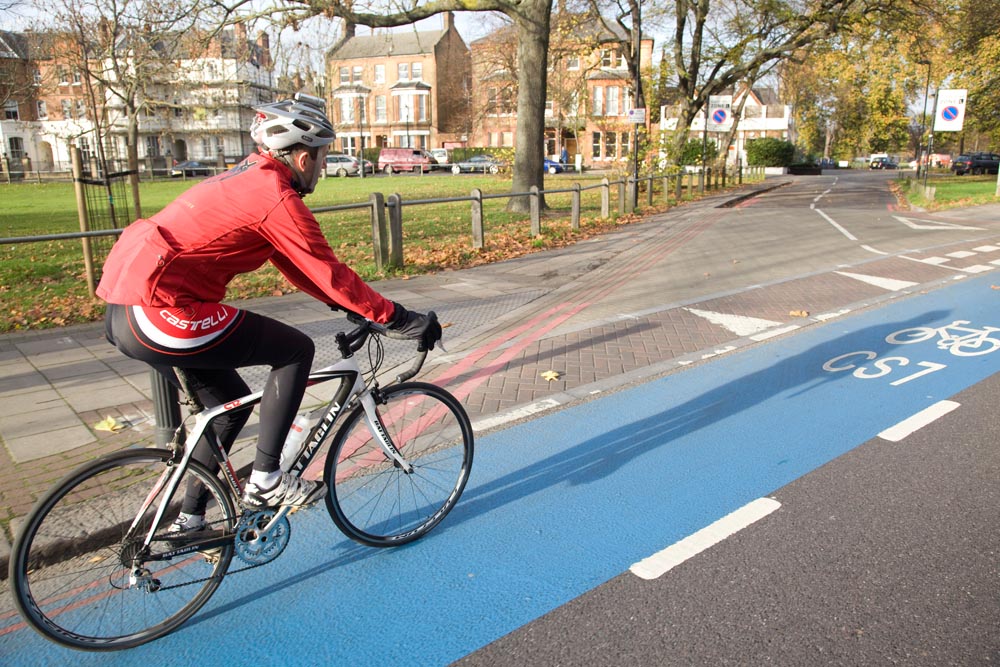Why are front brakes on the right in the UK?
It's never good when you find out which way round the brakes are on a fast descent - but why is it ever different, anyway?


Bike launches are the biggest offenders. Which side the front brake is on is sometimes a bit of a Russian roulette which will depend upon the origin of the mechanic who built the machine.
Most bikes that come in to the Cycling Weekly office for testing will be set up under British Standards - that means that the front brake is on the right and the rear brake on the left.
However, there are exceptions, and it's always best to check in advance of heading out for a ride. The same applies for any cyclist using a bike which is not their own, such as when hiring, especially abroad.
Most riders modulate their speed with predominantly the front brake - pull the rear too hard and the back wheel will skid.
When riding a bike set up the 'wrong way' to your home comfort, it's fairly easy to remind yourself which lever to pull.
It only goes wrong in an emergency situation, when learned motor responses take over. Often you'll just get a friendly jolting reminder, but should road conditions conspire against you it can all go wrong - you only need to ask the scar on my hip, and the £10k Pinarello I sent sailing down a mountain somewhere in Italy.
Why are Euro brakes set up differently to UK brakes?
If it causes so much irritation, why don't we all have our brakes on the same side?
Get The Leadout Newsletter
The latest race content, interviews, features, reviews and expert buying guides, direct to your inbox!
It depends who you ask.
Some people say it's because early French bikes (we're talking 19th century) had a rear brake only, and so it was on the right because most people are right handed.
In the UK, we were using coaster brakes, with no lever at all. When we added front brakes they went on the right, whilst the French were left with only the left available.

Other theories suggest it's to do with the hand used to indicate.
In the days before we had corresponding orange flashing lights, a UK driver using the left hand side of the road and sitting on the right would poke their hand out of the window when turning right, and draw an 'L' out the same window when turning left.
It was decided that cyclists should also be able to indicate in the same way, whilst still keeping their hand on the 'primary' brake. Fear of 'over the bars' moments meant the rear brake was wrongly considered to be the primary, so UK riders had theirs on the left.
Handily for UK riders who also get around by motorbike, we share our configuration across platforms, that's because the left hand works the clutch and the right the throttle, leaving space on the right for the brake lever.
Which way should you have your brakes?
Most UK riders start with their brakes in a UK configuration, and stick with it.
However, there is merit in revisiting this.

Typically, we keep our strongest hand (usually the one we write with) on the handlebar when reaching for food or water, using the weaker arm to fish around in the rear pockets.
Being a left handed rider, using a bike under the UK standards means that when I'm rooting around for that half eaten energy bar, the brake available to me is the rear. In a relaxed situation, this is fine (barring random occurrences) - in a race it's less than ideal.
Arguably, you're best off setting your brakes up so that your strongest hand has access to the front brake, so you can stop yourself safely without risk of sliding out.
However, there's also a lot of merit in consistency.
I've been riding bikes for a decade, and the braking forces are pretty hardwired. When the brakes are set up 'the wrong way round', I can keep that front of mind and exercise caution when hurtling down mountains. However, it's those moments when you're not expecting to need to brake when the senses take over which are dangerous. Though it might make sense to swap them over, I won't be doing it in a hurry.

Thank you for reading 20 articles this month* Join now for unlimited access
Enjoy your first month for just £1 / $1 / €1
*Read 5 free articles per month without a subscription

Join now for unlimited access
Try first month for just £1 / $1 / €1
Michelle Arthurs-Brennan the Editor of Cycling Weekly website. An NCTJ qualified traditional journalist by trade, Michelle began her career working for local newspapers. She's worked within the cycling industry since 2012, and joined the Cycling Weekly team in 2017, having previously been Editor at Total Women's Cycling. Prior to welcoming her first daughter in 2022, Michelle raced on the road, track, and in time trials, and still rides as much as she can - albeit a fair proportion indoors, for now.
Michelle is on maternity leave from April 2025 until spring 2026.
-
 Full Tour of Britain Women route announced, taking place from North Yorkshire to Glasgow
Full Tour of Britain Women route announced, taking place from North Yorkshire to GlasgowBritish Cycling's Women's WorldTour four-stage race will take place in northern England and Scotland
By Tom Thewlis
-
 Positive signs for UK bike industry as Halfords cycling sales grow
Positive signs for UK bike industry as Halfords cycling sales growRetailer admits that the impact of Donald Trump's tariffs remains to be seen
By Tom Thewlis